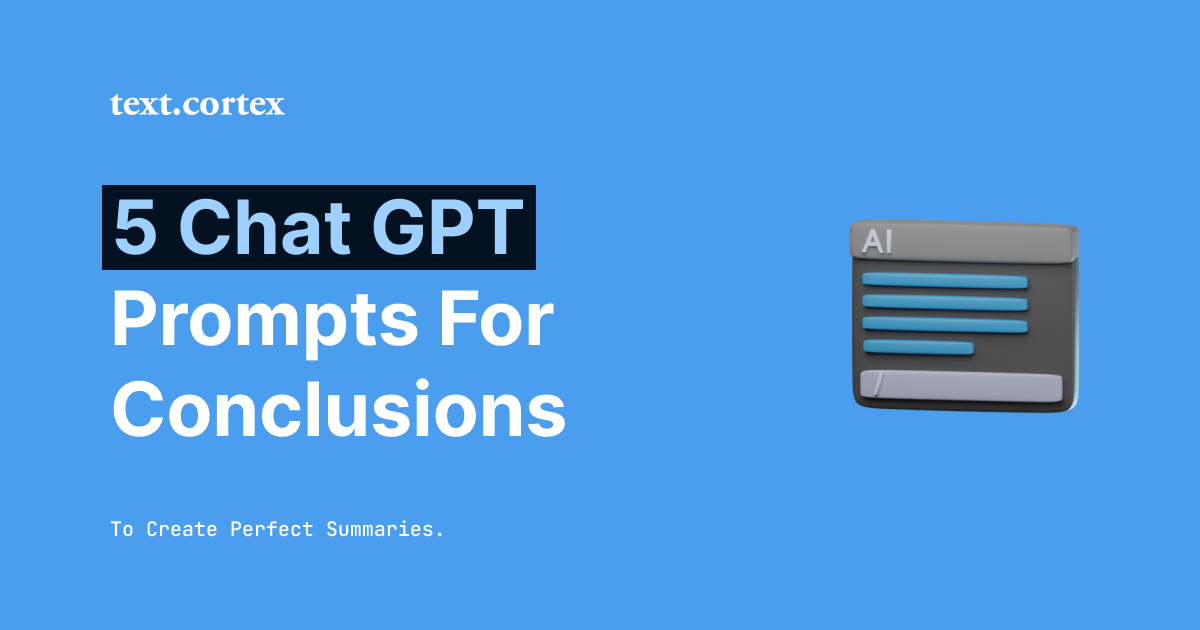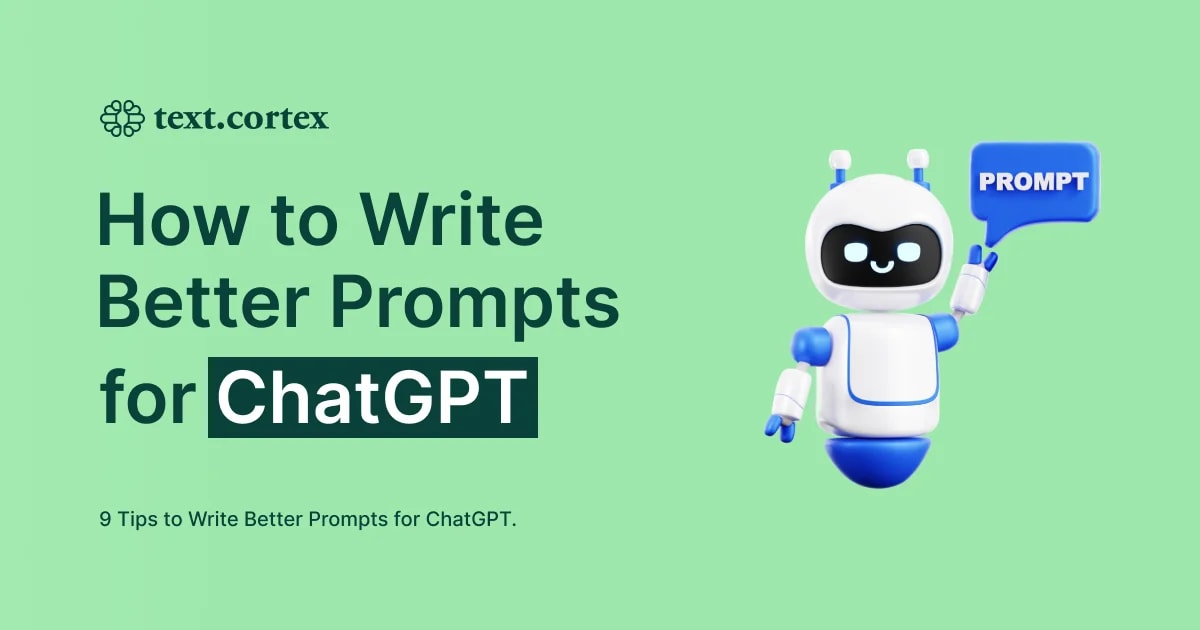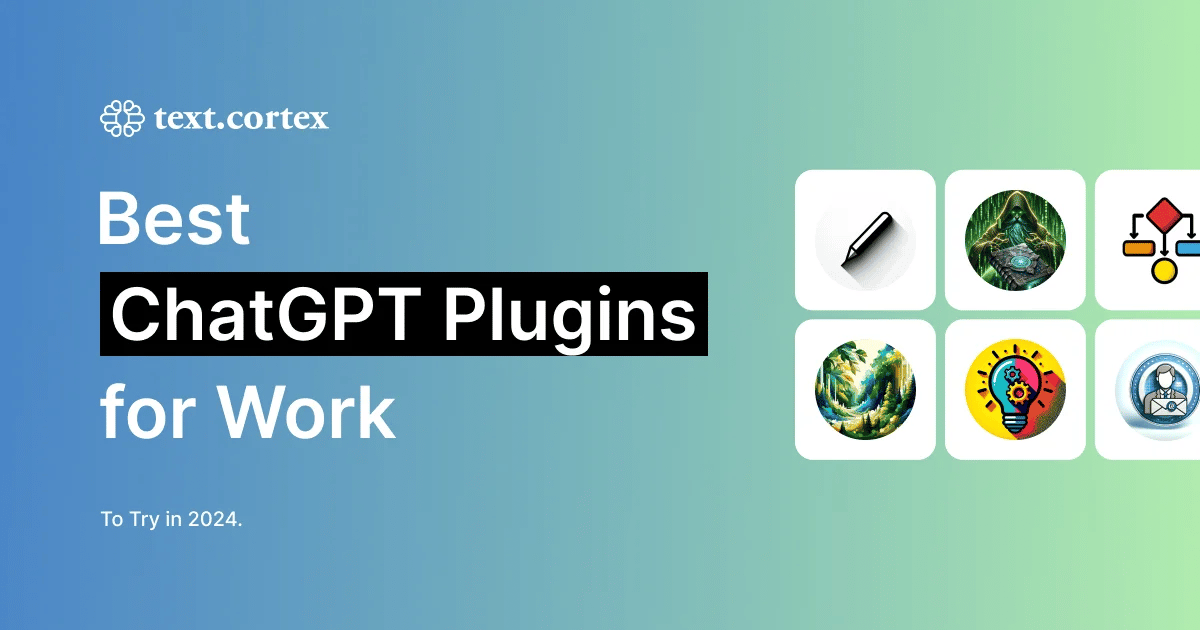Are you interested in learning if and how you can use ChatGPT to write convincing summaries of longer pieces of text?
But of course, you are.
That is the massive portion of what AI writing assistance tools are all about – to help you handle various paraphrasing techniques so you can have more time for being creative.
We’re on the same page about that.
Now, is it possible to create summaries with ChatGPT?
Another massive YES.
In this article, we’ll provide steps on how to do that and some useful ChatGPT prompts for conclusions that will help you finish your writing projects effortlessly.
Let’s jump into it!
ChatGPT Prompts – How Does That Work?
Before I get into details on how to use ChatGPT prompts for conclusions, you should first get to know the correlation between the tool and the desirable output you want it to generate.
Firstly, ChatGPT is not a tool only for writers. It is a convenient assistant also for:
- Developers
- Researchers
- Students
- Teachers
- Managers
- Translators
This is because it can produce, respond to, and solve questions of varying degrees of difficulty.
Not to mention the accuracy of its premium GPT-4 module.
But what is it about its intricate NLP and ML processes that leaves writers feeling so impressed with its efficacy?
The conversational nature of ChatGPT makes it easy to get started with the tool right away.
- Initiate New Chat
- Write your query
- Continue on the chosen topic within the same chat
The fact that ChatGPT eliminates the need to repeatedly specify the request is one of its most useful features.
All you have to do to get responses on a specific topic is make sure your requests stay in the same chat window.
ChatGPT can provide helpful tips on how to win at matches, learn how to use Excel, or find hope for your romantic woes.
ChatGPT and Writing Tasks
When it comes to writing, you can ask ChatGPT to:
✒️Rewrite
✒️Provide examples
✒️Add emojis in its output
✒️And more.
The catch is to correctly specify your query – be very detailed when creating your prompts.
In simple words, you can expect a more accurate response if you provide clear instructions on what the tool should focus on.
How to Use ChatGPT As a Summary Tool?
You should know your end goal before attempting to use ChatGPT as a summary tool.
For starters, if you need to condense lengthy texts or complex information into digestible chunks, keep in mind these powerful summary-oriented ChatGPT generic prompts:
1. "Summarize the main points of the passage/text/article." 💡
This prompt offers a general directive to create a comprehensive summary of the content.
It enables ChatGPT to distill the text's main points and present them in a comprehensible summary.
2. "Provide a brief summary of the key arguments presented in the text." 💡
This prompt instructs ChatGPT to concentrate on the text's main arguments or points.
The most crucial information should be distilled and presented succinctly.
3. "Summarize the article in 3-4 sentences." 💡
This prompt motivates ChatGPT to condense the data into a clear and precise summary by defining a desired length for the summary.
It aids in producing outputs that are shorter and better suited for quick summaries.
4. "Create an executive summary of the report." 💡
This prompt directs ChatGPT to create an executive summary for longer documents or in-depth reports that summarizes the most important findings, conclusions, and recommendations.
5. "Summarize the historical events leading up to [specific event]." 💡
This prompt instructs ChatGPT to list the crucial occasions and circumstances that contributed to a particular historical event when concentrating on historical events or timelines.
It is beneficial to give a brief summary of the historical background..
These prompts can serve as a starting point to experiment with summarization using ChatGPT.
You can discover the most effective approaches that align with your specific summarization needs as you interact with the model and fine-tune the prompts.
It will become more clear, once we go over the examples, right?
Let’s go then!
5 ChatGPT Prompts for Conclusions – Make Summaries with Ease Using These Examples
Let’s begin by creating a starting point that will be the same for all examples.
I’ll be using the portion of text on “How Little Do Users Read”, by Nielsen Norman Group, based on research study.
This example is practical because it offers a nice collection of information that can be useful for the output results.
1. “Provide a conclusion that summarizes the main findings and their implications."
This question directs ChatGPT to highlight and summarize the most important facts or arguments raised in the text.
It assists in coming up with a statement that sums up the main points.
For the purpose of example, I added some “extra” requests such as to use bullets and emojis in the output.
This is my result:
📌 Main Findings and Implications:
- The study recorded extensive information about the browsing activities of 25 users in a completely naturalistic setting.
- The users' above-average intelligence could be seen as a downside, but comparison with previous data suggests their behavior is representative of broader user behavior.
- The study yielded several interesting findings that are worth exploring further.
- The Back button is no longer the most-used feature on the web, with clicking hypertext links and buttons surpassing it.
- This shift is attributed to the prevalence of feature-rich web pages and applications that require users to interact with on-page buttons.
- Despite this change, supporting the Back button remains crucial for usability and is considered a strong usability guideline.
🔍📚 The full paper provides more in-depth insights and is recommended for further reading.
🌐💡 In conclusion, the study's naturalistic approach, along with its findings on user behavior and the changing prominence of web features, highlights the evolving landscape of web browsing. It emphasizes the importance of adapting design practices to meet user needs and expectations in an ever-evolving digital world.
Now, depending on the purpose of the output you want to generate, you can modify your prompts for ChatGPT.
With that said, you can even create conclusions that can be easily repurposed for a LinkedIn post, for instance, like the example above.
2. "Create a closing paragraph that reinforces the main thesis and leaves a lasting impression."
This prompt challenges ChatGPT to develop a conclusion that reaffirms the main thesis or central idea of the text by highlighting the main thesis or central idea.
Additionally, it makes the model think about how to leave a lasting impression on the reader.
Let’s see how that works on practical example:
💡🔍 In conclusion, this study on naturalistic web browsing behavior has provided valuable insights into the changing landscape of user interactions and feature preferences.
By instrumenting users' browsers and capturing their activities, the authors shed light on the shifting prominence of web features, with the Back button no longer reigning as the top choice. As we navigate the dynamic realm of web design, it is essential to adapt and cater to users' evolving needs.
While clicking hypertext links and buttons have taken center stage, we must not disregard the enduring significance of supporting the Back button for seamless usability.
This research serves as a reminder that user behavior is subject to change, and staying attuned to emerging trends and user expectations is key to crafting compelling and user-centric digital experiences.
As we move forward, let us leverage these findings to shape the future of web design, always mindful of the importance of user-centricity and adaptability. 💻🌐✨
As you can see, this type of conclusion is very effective to use for your blog articles and essays, for instance.
ChatGPT's output for this prompt is of a high caliber, but what really shines is that it also gives you a great example that will help you develop your writing style.
The only thing left is to use this output and tack on your "personal fingerprint."
3. "Summarize the key takeaways and provide a call to action or future outlook."
ChatGPT is urged by this prompt to go beyond simply summarizing the key ideas and offer concrete suggestions for the topic's future development.
It encourages the model to produce a conclusive and impactful result.
Here is how would that look like on our example:
🔑✨ Key Takeaways and Future Outlook:
- The study employed a naturalistic approach, observing 25 users' browsing activities without requiring any special actions.
- Although the participants had above-average intelligence, their behavior is likely representative of broader user behavior in the future, as supported by comparisons with previous studies.
- The research revealed several noteworthy findings, making the full paper a valuable read.
- The Back button has shifted to being the third most-used feature on the web, with clicking hypertext links and on-page buttons surpassing it.
- This change is attributed to the prevalence of feature-rich web pages and applications that necessitate clicking page buttons for accessing functionality.
- Despite the altered usage patterns, the Back button remains crucial for users and should continue to be supported as a strong usability guideline.
- Looking ahead, designers should consider the evolving user behaviors and prioritize seamless usability while incorporating hypertext links and on-page buttons effectively.
- The study's insights highlight the importance of staying up-to-date with user preferences and designing intuitive navigation experiences.
- By embracing these findings, designers can create web interfaces that align with users' expectations, ensuring a smooth and enjoyable browsing experience.
🌐🚀 Future Outlook: As the digital landscape continues to evolve, web designers should remain attentive to changing user behaviors and adapt their design strategies accordingly. Prioritizing user-centric approaches, seamless navigation, and thoughtful incorporation of key features such as hypertext links and on-page buttons will enable designers to meet user expectations effectively.
By staying informed about emerging trends and user preferences, designers can shape the future of web design, creating engaging experiences that cater to the diverse needs of users. Let us embrace these insights and forge ahead in building user-friendly digital environments. 💡💻
This kind of conclusion prompt is very useful when you want to summarize the subject of a subheading or highlight the most important findings from the research you're referencing.
It is also a fantastic option if you want to present a compelling case for your newsletters.
4. "Craft a reflective conclusion that highlights the broader significance of the discussed topic."
This prompt directs ChatGPT to consider the significance of the subject in a wider context for texts that explore broad themes or implications.
It encourages the model to come up with a conclusion that emphasizes the ideas being discussed with wider relevance or implications.
Let’s take a look at how that worked.
🔍💭 Reflective Conclusion:
The study's exploration of naturalistic web browsing behavior provides us with valuable insights into the ever-evolving digital landscape.
By observing 25 users as they engaged in their regular web activities, the authors captured a snapshot of user behaviors without any artificial constraints.
While the participants' above-average intelligence may raise initial concerns, a comparison with previous data suggests their actions are indicative of broader user behavior.
This realization amplifies the significance of the study's findings.
The research uncovers intriguing trends that deserve our attention.
The shift in web feature usage, with the Back button relinquishing its top position, is a clear reflection of the changing online landscape.
The dominance of clicking hypertext links and on-page buttons highlights the increasing prevalence of feature-rich web pages and applications.
As users navigate this interactive realm, it becomes vital for designers to adapt their strategies to ensure seamless usability and engaging experiences.
Amidst these changes, it is worth acknowledging the enduring importance of supporting the Back button as a usability guideline. Its frequent usage and role as a user's lifeline reinforce its significance, reminding us that even as trends evolve, certain design principles remain steadfast.
Looking ahead, this study prompts us to consider the broader significance of understanding user behaviors and preferences. It emphasizes the need for continuous research, staying attuned to emerging trends, and crafting user-centric design solutions.
By embracing the insights garnered from this study, we can shape the future of web design, delivering intuitive interfaces that align with users' expectations and provide them with delightful browsing experiences.
In a digital landscape that continually pushes boundaries, let us reflect on the significance of user-centricity and adaptability.
By blending innovation with user insights, we can pave the way for a web experience that seamlessly integrates evolving user behaviors and technological advancements, empowering users to explore and engage with confidence.
🌐🚀✨
Now, surely you can notice that this is a really extensive conclusion.
Meaning, this ChatGPT prompt did the trick.
The reflection on the research is there, as well as the personal retrospective on the case.
Plus, if you ask me, we have a very compelling finishing line.
5. "Create a concise conclusion that restates the main arguments and offers a final thought."
This exercise asks you to come up with a clear, succinct conclusion that summarizes the key points or ideas discussed in the text.
It helps ChatGPT in producing a conclusion that wraps up the conversation and gives the reader one last idea.
🔑💡 Concise Conclusion:
In conclusion, the study's analysis of naturalistic web browsing behavior sheds light on the evolving digital landscape.
The findings highlight the shift in web feature usage, with hypertext links and on-page buttons surpassing the Back button.
This change reflects the increasing prevalence of feature-rich web pages and applications. While the Back button remains important, designers must adapt to user preferences and ensure seamless usability.
By leveraging these insights, we can create user-centric web experiences that cater to evolving behaviors and provide engaging interactions. Let us embrace the changing tides of user preferences and design with adaptability and user-centricity at the forefront.
🌐🚀💡
This final conclusion is clear, concise, and to the point.
Again, depending on the nature of the content you're wrapping up, this can serve as the ideal final paragraph.
Wrapping Up
I can attest from my own experience and from talking to other writers that following these ChatGPT prompts for conclusions will help you:
✔️ Speed up your writing process.
✔️ Help you come up with ideas more quickly.
✔️ Allow you to explore new areas of writing.
And it's no secret that many professional writers, including myself, make regular use of some form of AI-powered writing assistance to achieve these goals.
But, I still enjoy being the sole author of my work.
🌸 I still write up to 2,000 words articles in 3 hours
🌸 I always do my research.
🌸 I still love to explore different levels of my creativity.
Even though it's on my top 5 list, I admit that ChatGPT isn't exactly my favorite cup of tea.
One fantastic extension for TextCortex is called Zeno ChatGPT, and it enhances the writing experience with many helpful new features.
I'll show you around in a nutshell.
What Is Zeno ChatGPT?
TextCortex's Zeno ChatGPT stands as an advanced and powerful AI-powered writing tool.
Leveraging state-of-the-art machine learning techniques and an extensive knowledge base, Zeno ChatGPT assists users in creating high-quality, search-engine-optimized content.
Its impressive language capabilities encompass a wide array of languages, including French, German, Romanian, Portuguese, and more.
Through its diverse features, TextCortex's Zeno empowers users to fully explore its potential.
👍 The rewriting toolbar allows for various modifications such as rewriting, expanding, summarizing, altering tone, and even text-to-speech capabilities.
👍 The Creator Suite provides access to over 60 AI-generated templates for diverse content formats, while the readability checker aids in evaluating the content's readability score.
👍 Zeno mode offers AI predictions based on the user's draft, and the content brainstorming features facilitate the generation of content ideas.
👍 Furthermore, Zeno Chat enables engaging conversations with AI writers in over 25 languages, fostering seamless interaction and content generation.
The seamless integration of TextCortex's Zeno with over 2000 popular online platforms further enhances its accessibility and usability across various services such as Docs, Gmail, LinkedIn, Notion, Facebook, and more.
By harnessing the power of TextCortex's Zeno ChatGPT, users can unlock their writing potential, optimize their content for search engines, and save valuable time in the content creation process.
Ready to elevate your writing experience?
Sign up for TextCortex's Zeno today and discover a new level of efficiency and excellence in your content creation journey.
Experience the ease, creativity, and optimization offered by this advanced tool and take your content creation to new heights.




%20(3).png)
